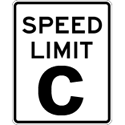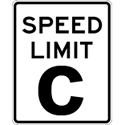Single photons obey the speed limits
Einstein taught us that the speed of light was the traffic law of the universe—nothing could go faster. The development of media in which atomic gases can slow down or speed up the passage of light pulses initially caused a stir, at least until the difference between phase velocity and group velocity could be carefully explained. But what about the behavior of single photons, the fundamental quanta of light? Reporting in Physical Review Letters, Shanchao Zhang and colleagues at the Hong Kong University of Science and Technology have shown that photons obey the law too.
Zhang et al. study optical precursors, which are signals preceding the main wave packet in a light pulse with a sharply rising leading edge (as in a step function pulse). Past work has shown that even in “superluminal” media where the group velocity may be faster than light speed, the precursor is always in front of the pulse. The authors extend this work to the single-photon level with the help of cold atomic gases: a photon generated in one rubidium gas traverses a second collection of rubidium atoms. With careful use of electromagnetically induced transparency, the researchers can separate the precursor from the main pulse and confirm it travels at the speed of light. The results add to our understanding of how single-photon signals propagate but also confirm the upper bound on how fast information travels. – David Voss





